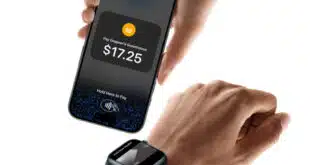Boosted by the rapid rise of chip card payments in Asia and the United States, more than half of general-purpose credit and debit cards worldwide now have an EMV chip, EMVCo reported Thursday. Plus, nearly two-thirds of card-present transactions now involve an EMV card being read by a point-of-sale terminal that can process chip data.
London-based EMVCo, the chip card standards organization owned by the major card networks, said that as of the end of 2017, 54.6% of payment cards globally were chip cards. The card count grew by more than 1 billion, or 18.4%, to 7.19 billion from 6.07 billion in 2016. EMVCo obtained its data from Visa, Mastercard, American Express, Japan-based JCB, and China-based UnionPay.

A latecomer in the conversion of magnetic-stripe payment cards to chips, the United States saw its EMV card count rise 16.3% last year to 785 million from 2016’s 675 million. EMV cards have doubled in just two years—the total was only 394 million at the end of 2015—and now account for 58.5% of all cards.
Along with the higher number of cards, more POS terminals can read the chips, resulting in a growing number of so-called chip-on-chip transactions. Globally, 63.7% of all card-present transactions last year used EMV technology, up from 52.4% in 2016, according to EMVCo.
EMV accounted for 41.2% of U.S. card-present credit and debit transactions, more than double its 18.6% penetration rate in 2016. Visa Inc. says 2.7 million U.S. merchant locations representing 59% of card-accepting storefronts accepted chip cards in December, up nearly 600% from 392,000 locations in September 2015.
“Both EMV chip card issuance and EMV chip transactions surpassing 50% globally is testament to the increasing maturity of the worldwide infrastructure, and a significant milestone for the payments community,” Jack Pan, EMVCo executive committee chairperson, said in a statement. “EMVCo continues to work closely with payment stakeholders to evolve the EMV specifications to provide a secure, interoperable foundation for emerging technologies across face-to-face and remote environments.”
Chip card payments are most advanced in EMVCo’s Europe Zone 1 region, which covers much of Europe and Turkey except most of the former Soviet Union and Yugoslavia. There, chip cards accounted for 98.6% of 2017’s POS transactions.
The U.S. EMV conversion has been centered on the networks’ October 2015 liability shifts, after which issuers or merchants that couldn’t support an EMV transaction would bear liability for any resulting counterfeit fraud. Today, the merchant holdouts are mostly small retailers, though some supermarket chains have struggled to get EMV implemented.
Gas stations, however, because of their considerable operational issues in converting fuel pumps for chip card acceptance, got a three-year reprieve from the networks on their original October 2017 liability shifts and now have until October 2020 to meet the standard.





